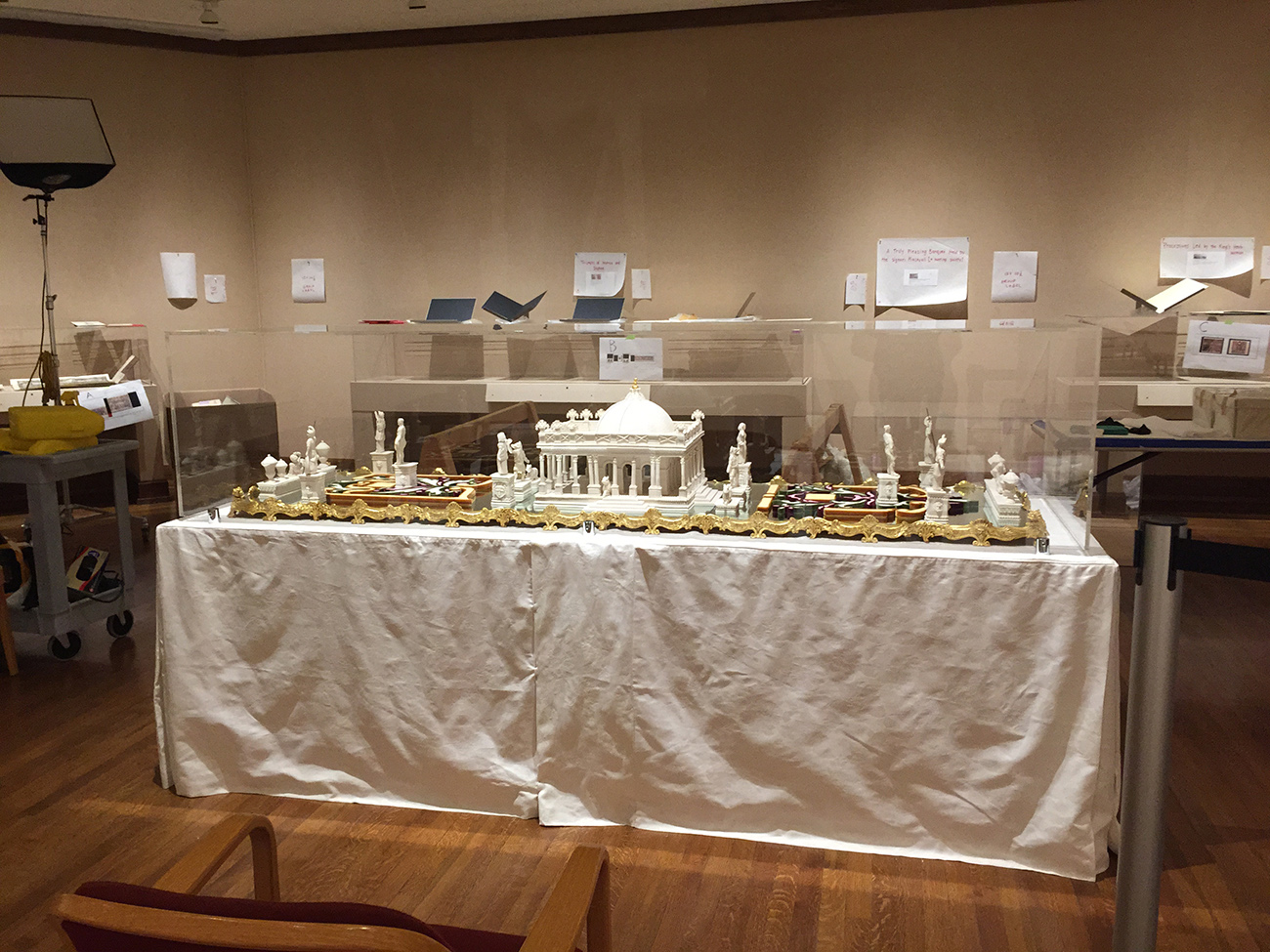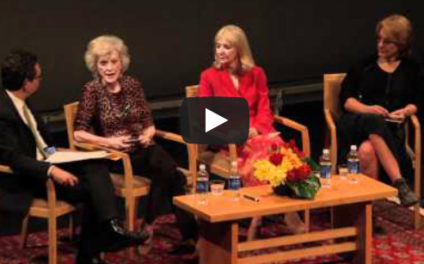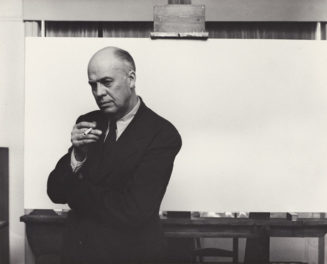Last month I was in Detroit with my colleague, Getty Research Institute assistant conservator Mark Benson, to help install the Research Institute exhibition The Edible Monument in the print galleries at the Detroit Institute of Arts. The exhibition was shown at the Getty last year from October through March, and this is its second venue. It took slightly more than a full week to install the rare books, prints, and scrolls, and in the process we got to know Detroit a little better.
The city is hip and lively, and the DIA has terrific collections, particularly of European paintings, sculpture, and decorative arts. The latter actually have close ties to the Getty and to L.A. The DIA’s first director was the German art historian Wilhelm Valentiner, who acquired extraordinary works for the collections in Detroit. When he had to retire in 1944 due to age restrictions, he moved to LACMA, where he was co-director until 1953—and then he came to work at the fledgling Getty Museum for several more years.
The stellar collections of decorative arts, particularly the 18th-century silver, porcelain, and furniture at the DIA, parallel those at the Getty Museum, and many of the objects at both the DIA and the Getty were formerly in the collections of Detroit collector Anna Thomson Dodge. She acquired considerable numbers of objects from Duveen Brothers (whose archives, incidentally, are now at the Getty). She died in 1970 at 100, and her estate was sold in 1971.
At the same time as The Edible Monument, the DIA has an extensive related exhibition, Bitter|Sweet: Coffee, Tea, and Chocolate, which displays decorative arts related to the display and service of food. It presents fascinating historical and geographic information about the locales where these favorite beverages and foods were grown and traded, then and now.

Clever holiday-themed trees for Bitter|Sweet: Coffee, Tea & Chocolate, on view at the Detroit Institute of Arts through March 5, 2017. Photo: Marcia Reed
Detroit is a thriving, cosmopolitan American city. We stayed in a convenient bed-breakfast hotel, which was in one of five large mansions on Ferry Street. Walking one block over to the museum every day, we passed street construction for the new Metro line going straight across the city. It seems that Detroit is another city like Los Angeles, where it was thought that mass transport was not needed. Everybody would drive the American cars manufactured here, right? All the major car companies were based in or around Detroit: Ford, General Motors, Chrysler, Dodge, and Packard. Unlike L.A., you do not see foreign cars in Detroit. Even the city’s nickname, “Motown,” comes from the auto industry which took off in the mid-20th century; one of our drivers had worked for GM for 35 years. As I asked him questions, hoping for an inside perspective on Detroit, he confirmed our impression that Detroit is definitely back.
On the way to the airport, this man told me that in the mid-twentieth century, America’s “Motor City” had neighborhoods based on waves of American immigration: Polish, Greek, Irish, Italian. Like him, many new residents were from the South, coming to Detroit for work. African-Americans lived in Black Bottom. Formerly known for its thriving neighborhood of African-American-owned businesses such as theaters, nightclubs, and gambling casinos, this area is now it is called Paradise Valley. Unfortunately, freeways and other urban renewal construction projects disrupted these ethnic neighborhoods. Evidently they are remembered nostalgically and much missed.
The two salient facts about Detroit that everyone recalls are the Twelfth-Street Riots in 1967, and the difficulties at the Detroit Institute of Arts in 2013, when the city filed for bankruptcy. Creditors sought payments through the sales of art works in the DIA’s art collection. Fortunately, this didn’t happen. But this was not the city or the museum in which we worked in early December! It was a busy, noisy place, throbbing with energetic streams of school kids, who gather to play chess in the lobby on Friday afternoons.
Installing an exhibition—unpacking, laying out the art in a new and different space, adjusting our Getty ways of doing things to our hosts’ procedures—was really fun, taking us out of our regular routines. We really enjoyed working with the very professional and congenial DIA staff, talking to their visitors in the halls outside the windowed galleries as they peered in to look at the sugar sculpture as Mark mounted it. There are continual school groups walking by. As he caught sight of the Temple of Circe, the central building in the sugar sculpture, a young student exclaimed, “It’s the White House!” On Friday night we went to a benefit for MOCAD, the Museum of Contemporary Art in Detroit, and bought some art. I brought back stencils by a well-known contemporary mural painter in the city.

Mark Benson installs a sugar sculpture by Ivan Day as part of The Edible Monument at the Detroit Institute of Arts. Courtesy The Detroit Institute of Arts

Installing a sugar sculpture as part of The Edible Monument. Photo: Marcia Reed
Not only were we surprised by the array and quality of Detroit’s museums and architectural gems, but our delectable discovery was Detroit’s deep interest in gastronomy. It is a city made for foodies, and no small portions! After seeing the art and touring the city, when you’re feeling hungry, you can go out to the great restaurants in Detroit’s different neighborhoods where restaurants specialize in ethic offerings and locally-sourced products. Wait-staff and menus often describe where the vegetables and grains come from; how animals were raised; the signal qualities of delicious just-baked breads. We ate like we were re-enacting the feasts portrayed in The Edible Monument.
One night we had a Festa della Porchetta, with excellent pork chops and grits (like polenta!). At an Italian restaurant we were in the Land of Cockaigne (or Cuccagna), with excellent handmade pasta, gnocchi, and wild mushrooms with polenta fritta. There were endless choices of interesting museums and enticing places to eat. If you like art and you enjoy food, we would recommend the Detroit Institute of Arts and Detroit’s great array of restaurants without reservation. Indeed, making reservations was our reward after a hard day’s work in the galleries.





Comments on this post are now closed.